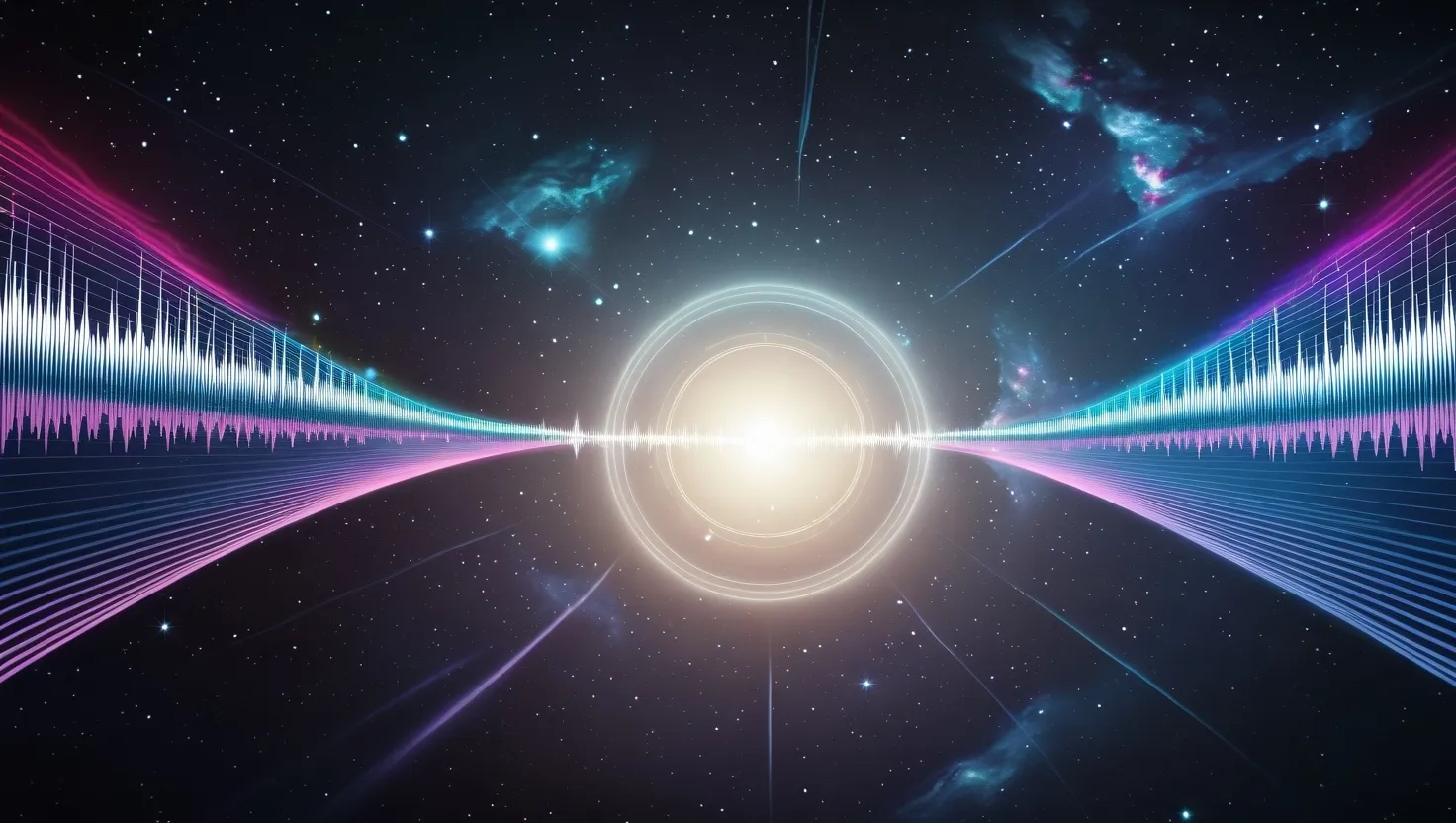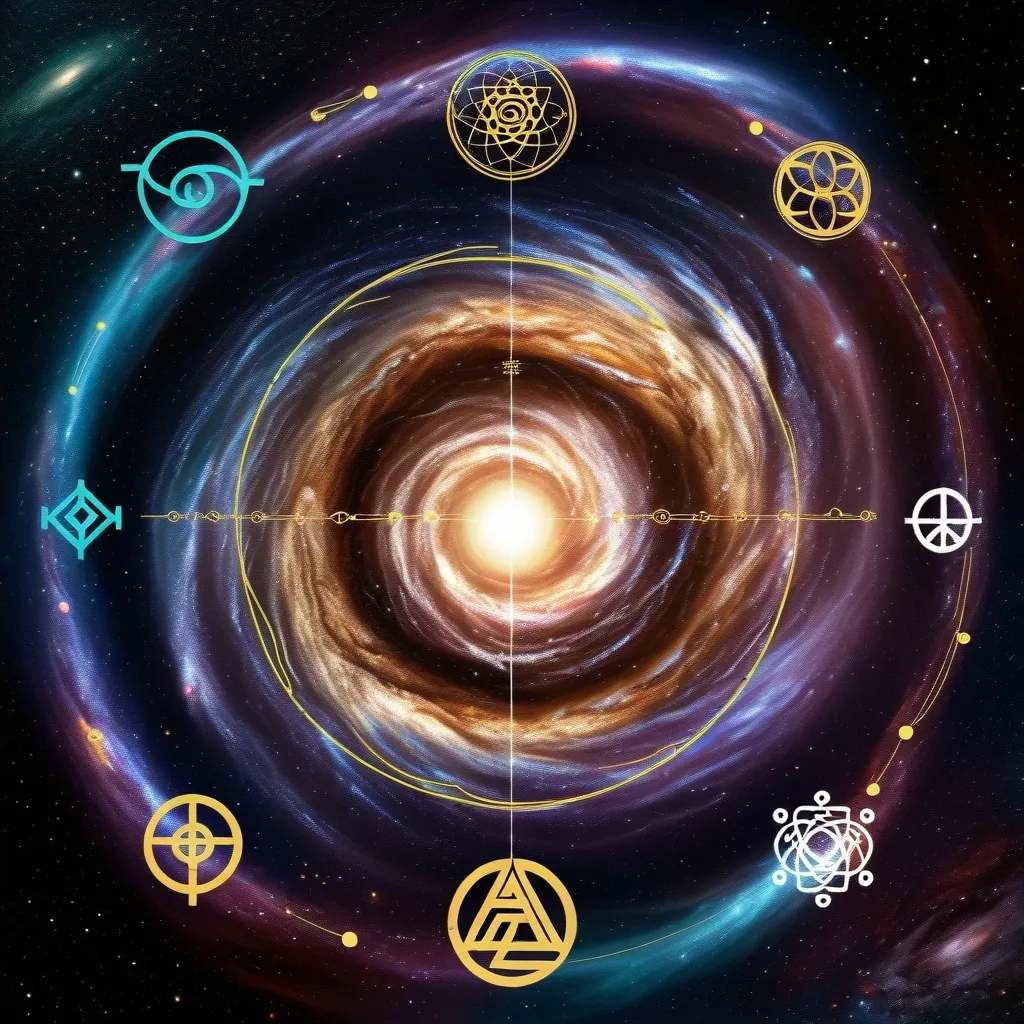In the vast and intricate tapestry of Vedic philosophy, there exists a concept that resonates deeply with the very fabric of existence: Shabda Brahman, or the Cosmic Sound. This idea, rooted in ancient texts like the Upanishads and further elaborated in Tantric traditions, posits that sound is not just a mere sensation, but the fundamental essence of the universe.
To understand Shabda Brahman, we must first delve into the concept of sound itself. In Vedic philosophy, sound is not just an auditory experience but a metaphysical reality. The term “Shabda” translates to “sound” or “word,” and it is this sound that is believed to be the manifestation of Brahman, the ultimate reality. This notion is eloquently captured in the Mandukya Upanishad, where the syllable Om is described as the imperishable Brahman, encompassing all that has existed, exists, and will exist.
The significance of Om as Shabda Brahman cannot be overstated. This single syllable is considered the root sound of creation, a vibration that underlies all existence. It is the sound that bridges the gap between the manifest and unmanifest realms, making it a powerful tool for spiritual transformation. When we recite Om, we are not just uttering a word; we are connecting with the cosmic resonance that permeates every aspect of the universe.
In Vedic philosophy, Shabda Brahman is often contrasted with Ashabda Brahman, or the soundless Brahman. While Ashabda Brahman represents the unmanifest, transcendent reality, Shabda Brahman is the manifest, creative force that shapes the world. This duality is central to understanding the role of sound in Hindu cosmology. The Maitri Upanishad, for instance, speaks of these two types of Brahman, emphasizing that the non-sound Brahman is revealed only through the sound Brahman, symbolized by the syllable Om.
The creative power of Shabda Brahman is a recurring theme in Vedic texts. According to the Nyaya and Vaisheshika schools, Shabda is not just verbal testimony but a unit of language that conveys a particular sense or meaning. This concept is further developed in the works of Sanskrit grammarians like Yaska, Panini, and Katyayana, who saw Shabda as a fundamental unit of speech and language.
In Tantric traditions, Shabda Brahman is linked with the concept of Nada Brahman, or the cosmic sound. Here, sound is seen as the first manifestation of Parama Shiva, the ultimate reality. This sound is not just a physical vibration but a psychic wave that underlies all creation. The Shiva Samhita, for example, states that wherever there is causal stress or divine action, there is vibration, and wherever there is vibration, there is sound.
The connection between Shabda Brahman and sacred mantras is profound. Mantras, which are essentially sound formulas, are believed to have the power to shape reality and influence consciousness. When recited with the right intention and pronunciation, mantras can awaken the divine consciousness within us, uniting us with the ultimate reality. This is why mantras are often used in meditation and spiritual practices to facilitate communion with the divine.
One of the most fascinating aspects of Shabda Brahman is its role in bridging the gap between the individual self and the universal self. The Mandukya Upanishad describes the Self as having four aspects, with the fourth aspect, Turiya, being the pure unitary consciousness beyond all duality. This Turiya state is achieved through the realization of Shabda Brahman, where the awareness of the world and its multiplicity is completely obliterated, leading to ineffable peace and the supreme good.
In practical terms, the concept of Shabda Brahman offers a unique perspective on meditation and spiritual practices. By focusing on sound, particularly the syllable Om, practitioners can transcend the mundane and connect with the cosmic vibrations that underlie all existence. This practice is not just about hearing a sound but about feeling the vibration deep within one’s being, allowing it to resonate with the universe.
The use of sound in healing and self-realization is another significant aspect of Shabda Brahman. In Vedic philosophy, sound is believed to have healing properties that can balance the body, mind, and spirit. The recitation of mantras, for instance, can calm the mind, heal emotional wounds, and even influence physical health. This is because sound, when used correctly, can align our inner vibrations with the cosmic vibrations, leading to a state of harmony and balance.
For those who are curious about the practical application of Shabda Brahman, it is worth exploring the concept of Mantra Chaitanya. This refers to the divine consciousness that is awakened through the recitation of mantras. When we internalize mantras and allow their vibrations to resonate within us, we can experience a profound transformation. This transformation is not just spiritual but also physical and emotional, as it aligns our entire being with the cosmic sound.
In conclusion, Shabda Brahman is more than just a philosophical concept; it is a living, breathing reality that permeates every aspect of our existence. By understanding and embracing this concept, we can gain a deeper appreciation for the role of sound in shaping our reality and facilitating our spiritual growth. Whether you are a spiritual seeker, a sound enthusiast, or simply someone curious about the mysteries of the universe, the exploration of Shabda Brahman promises to be a journey that resonates deeply with your quest for deeper understanding.
As we delve into this concept, we find that it is not just about the abstract idea of sound but about the tangible, experiential reality that it represents. It is about feeling the vibrations of the universe within our own being and allowing those vibrations to guide us towards a state of unity and harmony. In a world filled with visual symbolism and deities, the concept of Shabda Brahman reminds us of the profound power of sound to shape our reality and connect us with the divine.
So, the next time you hear the syllable Om or any other mantra, remember that you are not just hearing a sound; you are connecting with the very essence of the universe. You are resonating with the cosmic vibrations that underlie all existence, and in that moment, you are one with the ultimate reality. This is the magic of Shabda Brahman, a magic that awaits us all, ready to be discovered and experienced in the depths of our own consciousness.






